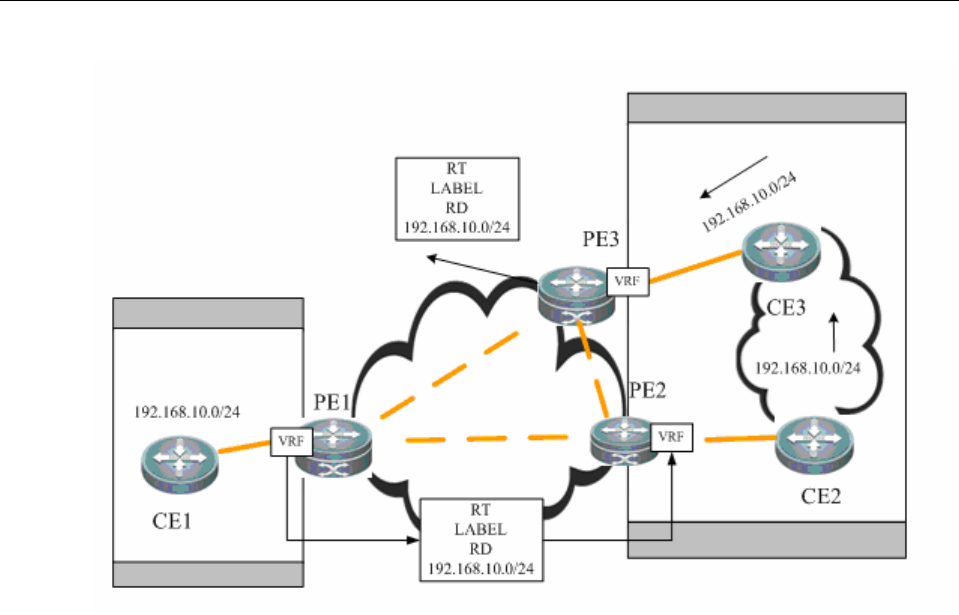
DES-7200 Configuration Guide Chapter 2 Configuring BGP IP VPN
2-66
To avoid such potential loop, when PE advertises type-3, type-5 or type-7 LSAs to CE, it will set
DN bit in the optional field of LSA. When other PE sites receives any LSA containing DN bit in the
optional field, the OSPF protocol on PE won't allow this LSA to participate in OSPF computation.
VPN route tag
VPN route tag is another loop detection technique. When OSPF protocol is run between PE and
CE, the corresponding VRF OSPF instance on PE will by default have a route tag called "VPN
route tag". The VRF OSPF instance on PE introduces VPN route and converts the route into
type-5 or type-7 LSA. When LSA is advertised to CE, this LSA will carry VPN route tag. In the
circumstance in which one VPN site is connected with multiple PEs, if PE receives a type-5 or
type-7 LSA that carries VPN route tag and this VPN route tag is the same as the that of OSPF
instance, then this LSA won't participate in OSPF route calculation.
PE-CE inter-area deployment
Under normal circumstances, the link between PE and CE can be in any OSPF area. However, if
the link between PE-CE falls into a non-0 area, then PE is an ABR to the OSPF area where the
CE is in. This may cause some problems as the OSPF protocol acting as ABR device has the
following features:
¾ ABR only calculates the type-3 LSA in the backbone area
¾ ABR only forwards type-3 LSA in the backbone area to the non-backbone area


















